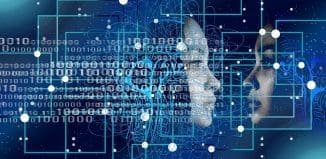Better Drive Safe: Police Use AI to Identify License plates
This post is also available in:  עברית (Hebrew)
עברית (Hebrew)
License plate recognition (LPR) technology has come a long way since its introduction in the late 70s. Increasing in its efficiency and reliability as time went on, LPRs slowly started to be replaced with automated LPRs (ALPR), computers which automatically alert law enforcement in regards to suspicious vehicles.
Before ALPRs entered the mainstream in police work, officers would have to manually review video footage of hundreds of cars until they would identify the car they were searching for. This method worked, but it was incredibly time consuming for the officers. As technology advanced, cameras became smaller and allowed for sharper images, even at night, and as time went on, more and more technologies starting receiving the “AI treatment”, and ALPRs were no exception.
As is the case with many other technologies, AI has helped completely revolutionizing the license plate recognition game. When in the past LPRs gave accurate reads about 85% of the time, now it would be considered an anomaly if the accuracy dropped under 99%, making these machines as reliable as human eyes, if not, then even more. With the help of AI, LPRs can do much more than simply catch a vehicles license plate number, it can understand the vehicle’s make, model, color and even read bumper stickers on the vehicle. “This is beneficial because when someone is the victim of a crime, they very rarely have the plate, but almost anyone can describe the make and model,” says lieutenant Brian Hess of the Westchester county police to Officer.com, “now I can search in a specific time period for every red Ford that went through the LPR. That was something that was never possible before.”
The LPR systems could be attached to an officers patrol car as well as to stationary intersection, allowing a wide grasp of license plate numbers from many different areas. This raises several concerns for privacy advocates, however, Hess claims that the data obtained by the LPRs are kept for only 15 days, after that the files are deleted in order to make room for new data.
Although the concerns for privacy seem credible, it is easy to argue that LPRs, at the end of the day, are beneficial for law enforcement and general safety. In a recent case where a young girl was abducted from her home in Oregon, an alert from the LPR systems in Nevada notified the authorities that the vehicle involved in the crime was in the area. Using this information, the police managed to reunite the girl with her family.
As clever as LPRs may seem now, law enforcement’s just getting started with the potential LPRs bring to the table. Advancements allowing the AI to detect if a driver is wearing his seatbelt or if he’s on his phone are currently in the works. Furthermore, LPRs don’t have to be strictly used for law enforcement. The technology may be used to detect damaged roads and signs. As is the case with other AI technologies, we’ve only scratched the surface when it comes to AI integrated LPRs.






























